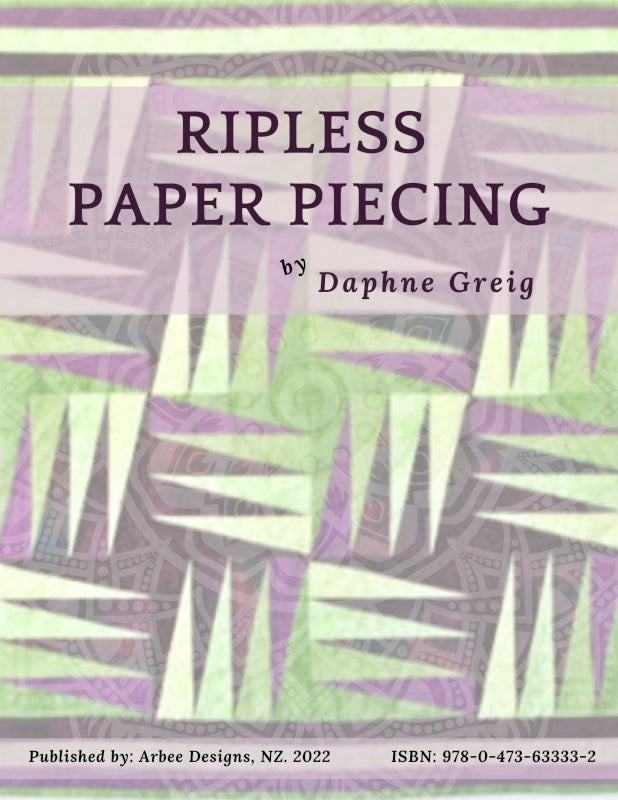
- Description
- Requirements
This small project will pay big dividends. Daphne will show you how to foundation piece without sewing through the paper. Using this easy method, you will have perfect points without spending hours removing tiny scraps of paper with tweezers. You will also save time and thread by being able to sew with a regular stitch length.
Daphne's ebook includes templates to make the sample provided plus a FREE pattern for a table runner using her Ripless Paper Piecing method and free Electric Quilt files in both EQ7 and EQ8. (contact us if you need the EQ6 file instead)
Daphne will teach you how to choose a range of values for your blocks, a skill which can be used in many other projects. She will continue to guide you as you choose a quilting design and bind your project with a single-fold binding.
Skill level: Easy.
In this ebook, you will learn how to
- select fabrics in a range of values in two color families
- download a foundation piecing block
- trace the foundation piecing block onto a freezer paper foundation
- set up your machine for ripless foundation piecing
- use Add-a-Quarter™ ruler when foundation piecing
- sew your blocks
- add borders to your wall quilt
- audition and test quilting designs
- quilt your quilt and add the binding
OUTLINE
Part One
- Choose fabrics for the project
- Discussion of value choices
- Pre-cut the fabrics
- Prepare the freezer paper foundation
- Sew 16 blocks
Part Two
- Explore optional arrangements for blocks
- Sew the quilt top
- Add borders around the quilt
Part Three
- Design ideas for both straight line and free motion quilting
- Quilt the quilt
- Adding binding
Stars in the Meadow is most effective when you select a range of values for your fabrics. You will use two colors and will need values ranging from medium-light to very dark for each color.

Value is the relative lightness or darkness of a fabric. Here are the fabrics I chose for my quilt.
You can see they range from medium-light to very dark. You will need to choose similar values in your color choices. In Part One, value will be discussed in detail. For preparation, I would like you to think about the colors you would like to use for your project. You may have all the values in your stash. Tone-on-tone fabrics will work best for this project. This project is a perfect way to use fabrics dyed in Cotton Dyeing Basics.
I chose lime green and violet for my quilt. Here are some other color options that you might like. There should be contrast between the two colors.
Fabric
100% cotton fabrics will work best for this project. You will use fat quarters for your quilt, a total of FOUR fat quarters in each color family. Your fat quarters must measure a minimum of 18" x 20 1/4". You will need a range of FOUR values for each color, from medium-light through dark. I will be discussing this further in Part One.
Other Supplies
- freezer paper – you will need white freezer paper so you can trace the block pattern provided in this ebook. You can usually find freezer paper in the grocery store, in the same section as aluminum foil and plastic wrap. You will need a minimum of six 8" squares.
- **Add-a-Quarter Ruler – 12" long
- sharp pencil and office-type ruler for tracing
- stapler
- fabric scissors
- paper scissors
- neutral cotton piecing thread – a medium shade of gray is recommended
- thread for quilting – this can be cotton, polyester or rayon
- rotary cutter and mat
- rotary rulers (6"x12" and 6"x24" are suggested sizes)
- pins, needles and other standard sewing notions
- iron, ironing surface
- sewing machine in good working order
- sewing machine needles – I like size 80/12 for piecing
To finish the quilt you will need:
- cotton or cotton/poly batting, 35" square
- backing fabric – 1 yard
- Choosing a selection results in a full page refresh.
- Opens in a new window.

